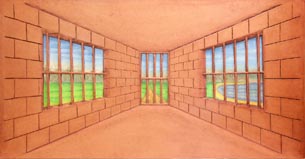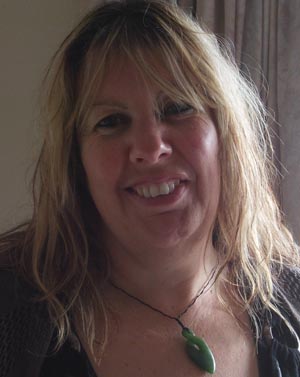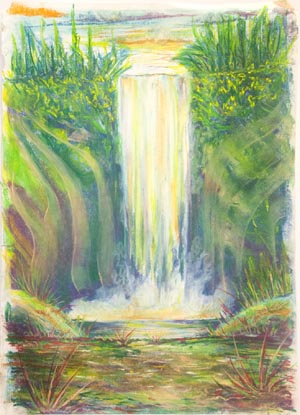Making art a tool to communicate
21 March 2012
Communication and learning to articulate their ideas and beliefs is a key part of the work undertaken by men in the Drug Treatment Unit at Christchurch Prison. For some, that means communicating through their art.
 Fiona Cambridge, Clinical Manager at the Drug Treatment Unit, says that communicating “from an inner core and digging deep to explore their emotional selves” is extremely valuable for the men.
Fiona Cambridge, Clinical Manager at the Drug Treatment Unit, says that communicating “from an inner core and digging deep to explore their emotional selves” is extremely valuable for the men.
A singer/songwriter, Fiona values the role of the arts in the healing journey of the men in the Drug Treatment Unit. Art, she explains, can provide a safe and meaningful way for them to express their life stories – particularly for those who have difficulty with literacy and self-expression.
“Their art, whether its drawings, carvings or paintings, can become a language of expression,” Fiona says. “And when they present their work to others in the group, they are sharing their thoughts. In doing so, they can gain new perspectives and understanding.”
 Like the eight other drug treatment units in prisons around New Zealand, the Christchurch Prison unit operates on the therapeutic community model, a social learning environment where people can build a healthy lifestyle through their interactions with each other.
Like the eight other drug treatment units in prisons around New Zealand, the Christchurch Prison unit operates on the therapeutic community model, a social learning environment where people can build a healthy lifestyle through their interactions with each other.
The nine drug treatment units aim to reduce re-offending by treating drug and alcohol addictions. CareNZ now provides Drug Treatment Services for eight out of the nine units, including the unit at Christchurch Prison.
A core foundation of the therapeutic community is a strong sense of belonging to a nurturing community in an atmosphere of trust and security. Above all, members of a therapeutic community need to learn to take responsibility for themselves, for others and for their environment.
Up to 45 men in the Christchurch unit live and work towards a common goal of making a positive change. This includes recognising the impact that alcohol and drugs has had on their life, and the lives of their families and the community, and then developing the necessary skills to learn from their past and not re-offend.
“We sing waiata every morning and there are guitars available in the unit,” Fiona says. “We encourage men to express themselves creatively: some choose rap while others will play the guitar or teach others to play. They all have to keep a journal, which consists of a daily entry to reflect their learnings from the day. Men who struggle with writing will often draw.
 “There can be initial resistance when the men start making art for the first time. Some relish the opportunity while others think it’s a waste of time because they don’t have the technique or patience to express an idea. For men who have some skills or are simply willing to try, making art can build confidence and self-esteem. They open up more in the way they think and communicate with others.”
“There can be initial resistance when the men start making art for the first time. Some relish the opportunity while others think it’s a waste of time because they don’t have the technique or patience to express an idea. For men who have some skills or are simply willing to try, making art can build confidence and self-esteem. They open up more in the way they think and communicate with others.”
Part of the process of being within a therapeutic community is that the men are required to work alongside each other and staff, sharing their thinking with the community.
“It can be challenging when they present their work to a community of 45 or more people from the front of the room because they’re opening themselves up to possible judgement,” Fiona says.
“But they gain a lot in confidence and communication skills. This becomes a transferrable skill they can use when they are released.”


